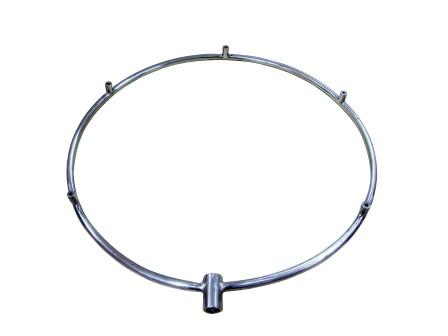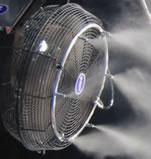Managing Heat Stress in Dairy Cattle
Introduction
Heat stress is a major problem faced by dairy animals during summer months which leads to decreased milk production and lower rates of fertility. This article explaines about heat stress, it's causes, it's impact and solutions.
Heat Stress and it's symptoms
Hot temperature and high humidity causes stress on dairy cattle. The ideal temperature for dairy cattle is around 20 degree celcius to 27 degree celcius inside the dairy shed and the humidity should be around 60%. Though this might look normal for north indian dairy farmers, in south india it gets really hot and humid in summer. The symptoms of heat stress are reduced feed intake and decrease in milk yield. The effect of heat stress is more visible in high yielding animals. Heat stress can cause losses in production of 20 percent or more and reduce conception rates by 10 to 20 percent.
Causes for Heat Stress
Heat stress occurs when any combination of environmental conditions cause the effective temperature of the environment to be higher than the animal's thermo neutral (comfort) zone. Four environmental factors influence effective temperature:
- Atmospheric temperature
- Relative humidity
- Air movement
- Solar radiation
Strategies to minimize the effect of heat stress
Most of the below mentioned strategies should be considered during planning and construction phase itself.
- Cattle Shed Design
The shed height should be 15 feet height at the center and 10 feet height at the sides. The longer side of the shed should be from east to west direction. This reduces direct sunlight into the shed.
- Painting the roof white
The outer roof should be painted white using supercem which will reflect sunlight and reduce temperature inside the shed. This is a cheap and effective solution to reduce temperature.
- Planting Trees
Planting trees around the shed will provide shade and protects from direct sunlight. This is a very cheap solution but takes time to produce results.
- Installing Fans
Depending on the design of the shed, either a ceiling fan or an oscilating fan can be installed. An high power wall mounted oscillating fan like Almonard is more effective than ceiling fan.
- Sprinklers and Foggers
Sprinklers are installed on the roof to sprinkle water and foggers/misters are installed inside the shed to produce fine drops of water. I have written a detailed article on sprinklers and foggers, click here to read further. This is not a very a economical solution but can be very effective in reducing temperature.
- Misting Rings
These are rings made of 3/4" pipe which has misting nozzles. This misting ring has to be attached to an oscillating fan and connected to the direct motor water pipeline. This creates good cooling effect inside the shed and is cheaper than fogging system.


- Washing animals in the afternoon.
Washing animals in the afternoon in addition to morning and evening cycle is effective.
- Fixing Gunny Curtains
You can use the empty dhana gunny bags to stich a curtain which can be hanged on the sides of the shed. These will stop direct sunlight to the shed. And also if you spray water on to these gunny curtains while washing animals, they will produce cooling effect.
Conclusion
You have to prudently mix and match the above mentioned strategies based on your budget to reduce heat stress.
